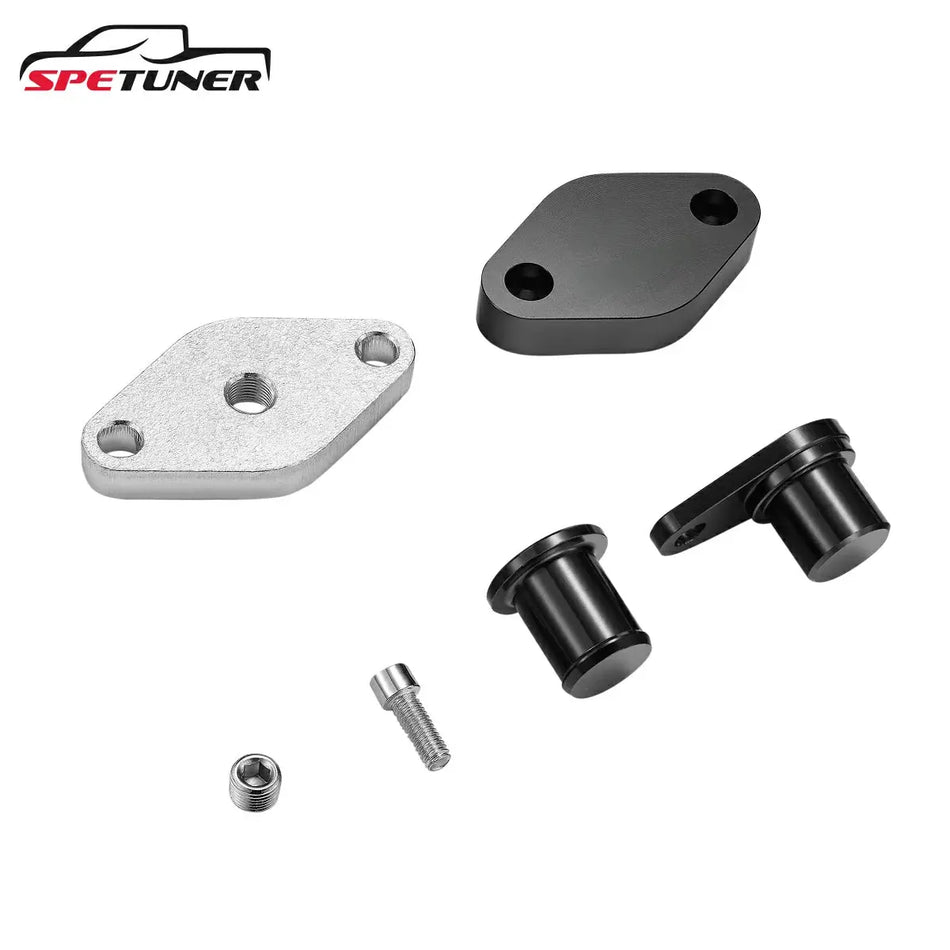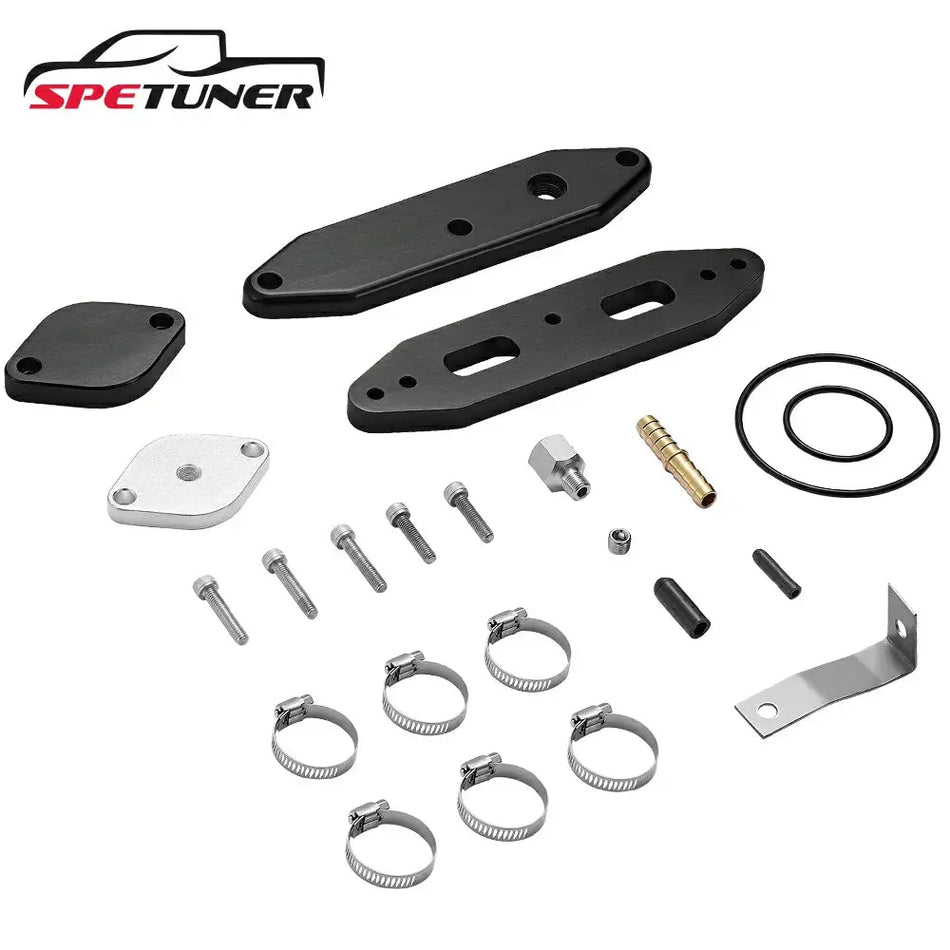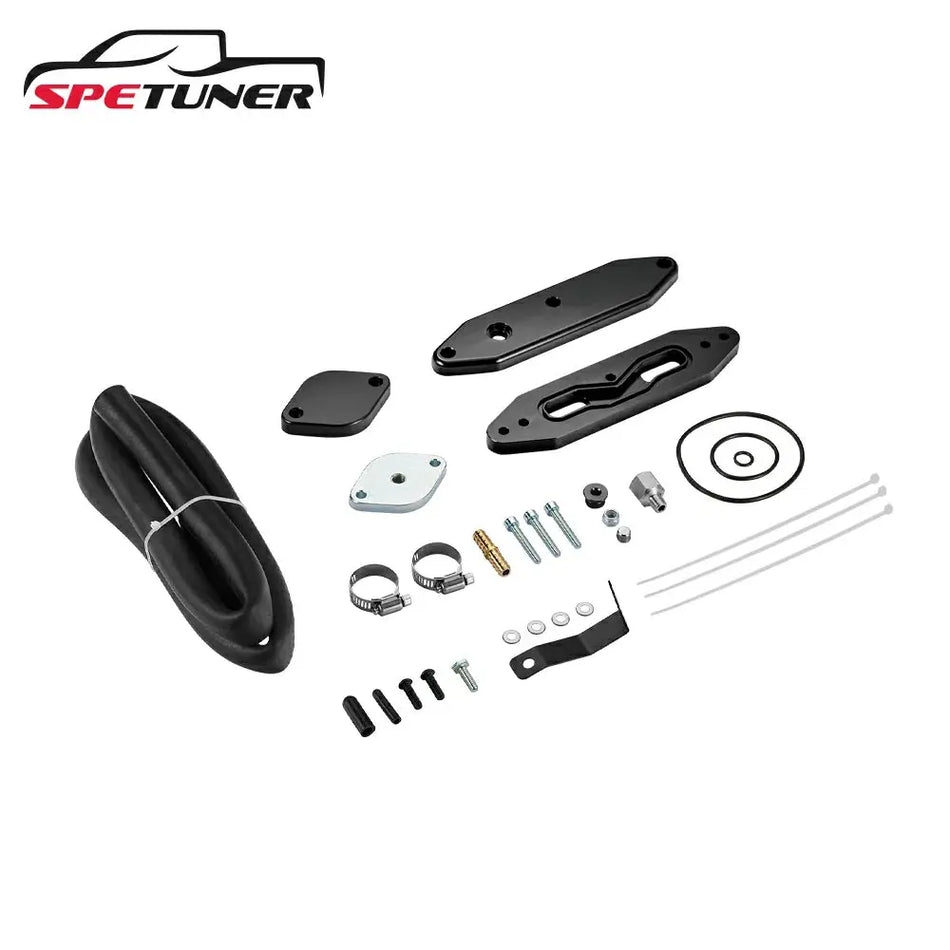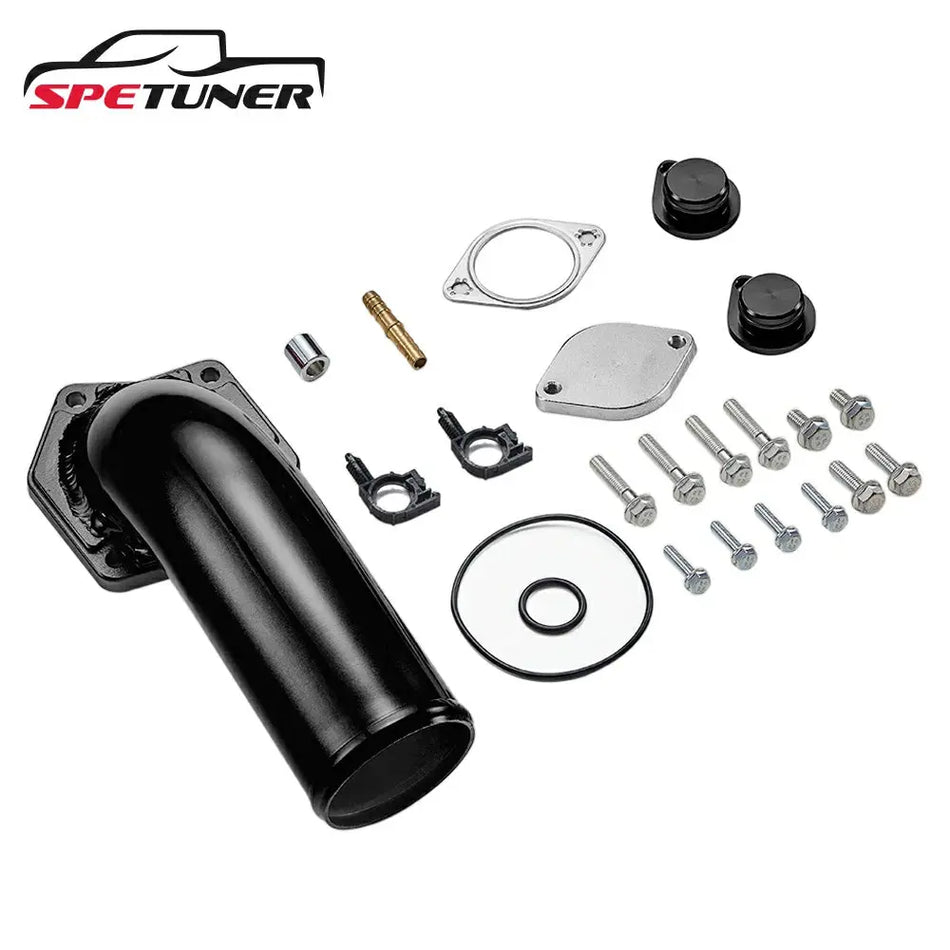Understanding the L5P Duramax and Its Regeneration System
What Is the L5P Duramax? Which Model Years Use It?
The L5P Duramax is GM's fifth-generation 6.6L V8 diesel engine. It debuted in the 2017 model year for the Chevrolet Silverado HD and GMC Sierra HD and is still used in models through 2024.
Compared to earlier Duramax versions like the LML or LBZ, the L5P is stronger, quieter, and cleaner — but that comes with a much more complex emissions system, including DPF, EGR, and DEF.
If you own a 2017+ Silverado HD or Sierra HD with a Duramax, you're most likely dealing with an L5P engine and its emissions-related behaviors.
How the DPF Regeneration System Works on the L5P
The DPF (Diesel Particulate Filter) traps soot from exhaust gases. When soot builds up, the system triggers a "regen" process—it heats the exhaust to burn off the particles.
There are three types of regeneration:
- Passive regen happens naturally at highway speeds, so no driver input is needed.
- Active regen: Triggered by the ECM when passive regen isn't enough, usually adds fuel to raise temps.
- Forced regen: Manually using scan tools or tuning software when the DPF is too full to regen.
The L5P's emissions system is sensitive — if regen doesn't happen often or adequately enough, you'll get DPF warnings, reduced power, and eventually limp mode.
If you're reading this, you've probably been there.

When and Why You May Need to Perform a Forced Regeneration
Signs That Your Truck Needs a Regen
Normally, the ECM handles regen automatically. But when something goes wrong—too many short trips, idle time, or sensor issues—the DPF can clog up faster than it can clean itself.
You might notice:
- A "DPF Full" or "Service Exhaust System" message
- Reduced power or limp mode
- Poor throttle response
- Higher than normal fuel consumption
These are all warning signs that regen isn't happening, or isn't working well enough.
Sometimes, a forced regen is the only way to get your truck back in fighting shape without replacing the filter.
Common Reasons Regeneration Fails
Regens fail when the system can't reach the right conditions: heat, airflow, or load.
Here are some real-world causes we see in the shop:
- Too many short-distance trips where temps never get high enough
- Soot level sensor malfunctions or misreads
- DEF system faults blocking regen logic
- Excessive EGR deposits choking the exhaust flow
- ECMs that lock regen function unless reprogrammed or unlocked
Left untreated, failed regens lead to excessive backpressure, cracked DPFs, and sometimes full emissions system replacement.
This is often the point when frustrated owners start Googling delete kits — and we'll get to that later.
How to Perform a Forced DPF Regeneration Manually on an L5P Duramax
Conditions You Must Meet Before Starting a Regen
Safety and system conditions must be met before you can manually start a regen; otherwise, the truck will not allow it.
Here's what needs to be in place:
- The fuel tank must be over ¼ full
- Transmission in park or neutral
- The engine at idle, usually warm
- No active DEF or emission-related fault codes
- The vehicle is stationary, with the exhaust area clear of obstructions
These safety requirements are built into the ECM to prevent accidents — remember, a regen sends exhaust temps soaring past 1,000°F.
Never run a forced regen near anything flammable or indoors without proper ventilation.
How to Force a Regen on Duramax L5P with Edge Insight CTS3 or Spetuner iDash
Two of the most popular tools we use in-shop — and recommend to customers — are the Edge Insight CTS3 and SPETUNER's iDash SuperGauge.
Both allow you to monitor soot levels and backpressure and even trigger regen on supported model years. Here's a general rundown using the CTS3:
- Plug into the OBD-II port
- Navigate to the DPF regen function under "Diagnostics" or "Special Functions"
- Ensure all preconditions are green-lit
- Start the forced regen — the system will rev the engine and increase exhaust temps
It usually takes 20–40 minutes. During that time, the soot mass will drop as temperatures rise, and the ECM will burn off the particulates.
SPETUNER iDash offers similar features and is an excellent fit for a compact gauge-style monitor.
Do You Need Tuning to Unlock Regen Features?
Some L5Ps, especially earlier model years (2017–2019), may lock out manual regen from the factory.
That's where custom ECM tuning comes into play. With proper software (EFI Live, HP Tuners, etc.), a tuner can unlock regen control — or even automate the process entirely.
Important note: Unlocking regen is legal and safe, unlike tampering with emissions logic or performing a delete, which we'll cover in the next section.

How the DEF System Impacts Regeneration on Your L5P
Common DEF System Issues That Affect DPF Regeneration
Your DPF and DEF systems work together — if one fails, the other usually gets dragged down with it.
Here's where l5p Duramax problems usually start:
- DEF level sensor malfunctions
- Crystallized DEF is clogging the injector line
- Contaminated DEF fluid or freezing issues
- Fault codes like P207F or P20EE that block the regen cycle entirely
When the ECM sees a fault in the DEF system, it often disables active and forced regen. That's why many forced regen attempts fail — the problem isn't soot, it's DEF.
How to Reset the DEF System on an L5P Duramax
You can try a basic DEF reset by:
- Refilling the DEF tank with fresh, high-quality fluid
- Clearing any stored codes using a scan tool (Edge CTS3, SPETUNER iDash, or dealer-grade tool)
- Letting the truck idle for a few minutes after the reset
However, some DEF system codes are non-resettable without dealer-level reprogramming or component replacement.
If you've topped off your DEF and cleared codes, but it's still giving you issues, it might be time to inspect the DEF injector, tank heater, or NOx sensors.
Why Some Owners Consider Delete Kits — And What You Need to Know
What Is an L5P Duramax Delete Kit?
Some owners start researching DPF, DEF, and EGR delete kits when regen issues continue to mount.
A typical L5P Duramax delete kit includes:
- DPF and SCR pipe replacements (often straight-pipe)
- EGR block-off plates or reroute kits
- DEF system simulators or plug-in resistors
- Tuning software to disable emissions-related logic in the ECM
Once installed, these kits effectively remove all regen functions. No soot buildup, no DEF refills, no more DPF warning lights.
Brands, materials, and tuning compatibility vary widely. Before you choose, read: best delete kit for L5P trucks (off-road/competition use only).
Sounds tempting — but it's not that simple.

The Risks and Legal Reality of Using a Delete Kit
Here's the hard truth: DPF/DEF deletes are federally illegal on any road-going diesel truck in the U.S. and Canada.
They violate EPA emissions regulations, can void your powertrain warranty, and make your truck ineligible for inspection or resale in many states.
Even if it's "for off-road use only," enforcement has recently increased, including fines for shops and truck owners.
Deleting your truck to avoid regen isn't worth risking thousands in penalties, especially when there are safer options.
Legal Alternatives to Solve DPF and Regen Problems
Not all regen issues mean you need to go nuclear. Here are safer, legal ways to get your L5P running clean and strong:
- DPF cleaning or professional flushing
- High-flow DPF replacements (CARB/EPA certified)
- Upgraded sensors and exhaust temp probes
- ECM tuning that improves regen logic without disabling emissions
- Using monitoring tools like CTS3 or iDash to stay ahead of clog-ups
These solutions help your truck perform better without crossing legal lines — and keep you out of limp mode and out of court.
How to Extend the Life of Your DPF and Reduce Forced Regen Frequency
Driving Habits That Support Healthy Regeneration
Many regen problems come down to how — and where — the truck is driven.
If your L5P sees mostly short trips, stop-and-go traffic, or extended idle time, passive and active regen can't do their job, and the DPF doesn't reach the temperatures it needs to burn soot.
Here's what helps:
- Take the truck on a 15–20 minute highway run regularly
- Avoid idling longer than a few minutes
- Don't clear regen-related codes without solving the root issue
These small adjustments can drastically reduce how often forced regens are needed.
Monitoring and Maintenance Tools That Help You Stay Ahead
Keeping an eye on soot levels and regen cycles puts you in control, not your ECM.
That's why we always recommend:
- Edge Insight CTS3: Touchscreen monitor, regen trigger, code reader
- SPETUNER iDash SuperGauge: Compact, gauge-style DPF monitor
- OBD2-compatible scan tools: To read and clear fault codes
- DPF-safe fuel additives: Help keep soot levels down and exhaust cleaner
Combine proper driving with the right tools, and you'll avoid 90% of the common regen issues L5P owners complain about.
Final Thoughts and What to Do Next
Let's be real — dealing with regen issues on the L5P Duramax can be frustrating. It wears on you between unexpected limp mode, confusing fault codes, and downtime you didn't plan for.
But now, you've got a solid understanding of:
- How the DPF and DEF systems work together
- When forced regeneration is necessary — and how to do it safely
- Why regen fails, and what you can do to fix it
- The truth about Duramax delete kits, and smarter legal alternatives
- Driving and maintenance habits that keep your emissions system healthy
This isn't just about emissions — it's about keeping your truck on the road, running strong, and staying compliant.
Ready to get control of your regen system?
We carry the exact tools and equipment trusted by diesel techs — like the Edge CTS3, SPETUNER iDash, and high-flow DPF solutions for legal performance upgrades.
FAQs
Q1: How to force regeneration on a Duramax L5P?
A1: You can force a regen on an L5P using a scan tool like the Edge Insight CTS3 or SPETUNER iDash, as long as certain conditions are met (warm engine, ¼ tank fuel, etc.).
Q2: How do you manually initiate a regen on the L5P Duramax?
A2: Plug in your scan tool, navigate to the special functions menu, verify preconditions are met, and trigger the forced regeneration process.
Q3: What are the signs that my L5P needs a forced regen?
A3: Look for DPF warning messages, reduced engine power, poor throttle response, or unusually high soot levels shown on your monitor.
Q4: Can a forced regen fail to start even with the right tool?
A4: Yes — if there are active DEF or emission system fault codes, the ECM will block regen. Clear the codes first, then attempt regen again.
Q5: How long does a forced regen take on an L5P Duramax?
A5: Most forced regens take 20 to 40 minutes, during which the truck revs higher and burns off built-up soot in the DPF filter.
Q6: How do I reset the DEF system on my L5P Duramax?
A6: Refill the DEF tank with clean fluid, clear any fault codes with a scan tool, and let the truck idle to allow the system to reinitialize.
Q7: Does the L5P require tuning to enable manual regen?
A7: Some model years may require ECM unlock or tuning software to allow manual regen via third-party tools like EFI Live or HP Tuners.
Q8: Is deleting the DPF system a legal solution to regen issues?
A8: No. Using a delete kit is illegal on road-going trucks in the U.S. and Canada and can result in fines or failed inspections.
Q9: What are legal alternatives to DPF delete kits for L5P Duramax?
A9: Legal options include high-flow DPFs, ECM tuning that improves regen logic without disabling emissions, and regular filter cleaning.
Q10: How can I avoid needing frequent forced regens in the future?
A10: Drive your truck on the highway regularly, reduce idle time, and use monitoring tools to track soot levels before regen issues develop.










